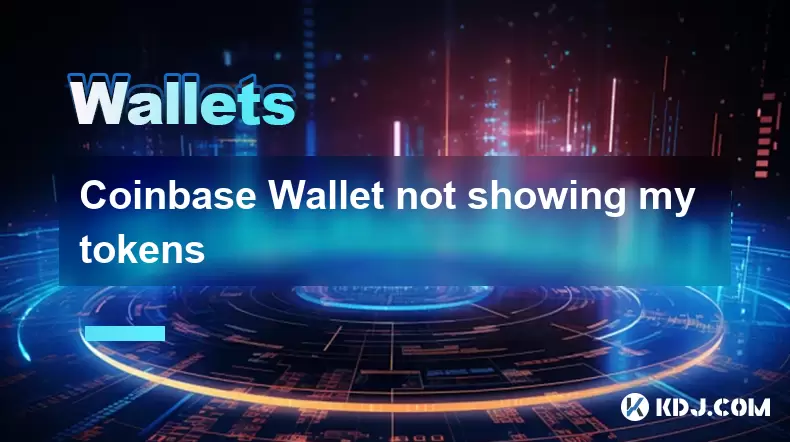-
 Bitcoin
Bitcoin $118100
0.44% -
 Ethereum
Ethereum $3765
5.84% -
 XRP
XRP $3.498
3.12% -
 Tether USDt
Tether USDt $1.000
0.00% -
 BNB
BNB $753.2
3.41% -
 Solana
Solana $181.7
3.58% -
 USDC
USDC $0.9999
0.01% -
 Dogecoin
Dogecoin $0.2704
12.75% -
 Cardano
Cardano $0.8684
5.85% -
 TRON
TRON $0.3151
-0.86% -
 Hyperliquid
Hyperliquid $46.06
4.51% -
 Stellar
Stellar $0.4695
2.48% -
 Sui
Sui $3.910
3.18% -
 Chainlink
Chainlink $19.36
6.65% -
 Hedera
Hedera $0.2750
3.99% -
 Bitcoin Cash
Bitcoin Cash $544.6
6.31% -
 Avalanche
Avalanche $25.12
3.69% -
 Shiba Inu
Shiba Inu $0.00001559
5.40% -
 Litecoin
Litecoin $116.8
5.10% -
 UNUS SED LEO
UNUS SED LEO $8.991
0.05% -
 Toncoin
Toncoin $3.283
2.79% -
 Polkadot
Polkadot $4.509
3.97% -
 Uniswap
Uniswap $10.67
6.58% -
 Ethena USDe
Ethena USDe $1.001
-0.01% -
 Monero
Monero $323.2
0.48% -
 Pepe
Pepe $0.00001410
6.37% -
 Bitget Token
Bitget Token $4.964
1.93% -
 Dai
Dai $0.9998
-0.01% -
 Aave
Aave $326.2
3.85% -
 Bittensor
Bittensor $421.8
2.46%
How to view transaction history on my wallet?
To view your cryptocurrency transaction history, navigate to the "History" or "Transactions" section in your wallet dashboard, where you can review details like dates, sender/receiver addresses, and transaction status.
Jul 20, 2025 at 09:56 am

Understanding Your Wallet Interface
Before diving into the specifics of viewing your transaction history, it's crucial to understand the layout and features of your wallet interface. Most cryptocurrency wallets offer a dashboard that provides an overview of your balance, recent transactions, and other relevant information. The transaction history section is typically accessible from the main menu or home screen. Depending on the wallet provider, this section may be labeled differently—such as "History," "Transactions," or "Activity Log." Navigating to this area will allow you to see a list of all transactions associated with your wallet address.
Accessing Transaction Details
Once you're in the transaction history section, you'll likely see a list of entries detailing each transaction. Each entry usually includes information such as the date and time, the sender and receiver addresses, the amount transferred, and the transaction status (e.g., confirmed, pending). Clicking on a specific transaction will often reveal more detailed information, including the transaction hash, block confirmation number, and network fees involved. This level of detail is essential for verifying the legitimacy of a transaction or troubleshooting issues related to fund transfers.
Filtering and Sorting Transactions
To make it easier to locate specific transactions, most wallets provide filtering and sorting options. These tools allow you to narrow down your transaction history based on criteria such as date range, transaction type (e.g., send, receive), or status. Some wallets even let you search for transactions using keywords like the recipient's address or a custom label you've assigned. Utilizing these filters can save time when you need to quickly find a particular transaction without scrolling through your entire history.
Exporting Transaction History
For record-keeping or accounting purposes, many wallets offer the ability to export your transaction history in a downloadable format, such as CSV or PDF. This feature is especially useful for users who need to track their financial activities for tax reporting or business audits. To access this functionality, look for an "Export" button within the transaction history section. Be sure to store these files securely, as they contain sensitive information about your wallet activity.
Verifying Transactions on the Blockchain Explorer
If you want an additional layer of verification, you can use a blockchain explorer to check the status of your transactions independently. By copying the transaction hash from your wallet and pasting it into a blockchain explorer like Etherscan for Ethereum-based transactions or Blockchair for Bitcoin, you can view real-time data about the transaction’s progress on the network. This method ensures transparency and helps confirm that the transaction has been successfully recorded on the blockchain.
How do I differentiate between incoming and outgoing transactions?
In most wallets, incoming transactions are marked distinctly from outgoing ones, often using color codes or icons. Green indicators typically represent funds received, while red symbols signify funds sent out. Additionally, the labels "Received" and "Sent" are commonly used to clarify the direction of the transaction.
Can I recover deleted transaction history?
Unfortunately, once transaction history is deleted from a wallet application, it cannot be recovered unless you have a backup file or the wallet service offers a cloud-sync feature. Always ensure you maintain regular backups of your wallet data to prevent accidental loss of important transaction records.
Why don’t some transactions appear in my history?
If certain transactions are missing from your history, it could be due to synchronization issues or delays in network confirmations. Make sure your wallet is fully synced with the blockchain and wait for several confirmations if the transaction is still pending. If the issue persists, double-check the wallet address used for receiving funds to avoid discrepancies.
Is transaction history visible to others?
Your transaction history is private to your wallet, but the transaction details on the blockchain are publicly accessible. Anyone with your wallet address can view the transaction history associated with it via a blockchain explorer. Therefore, it’s important to treat your wallet address with the same level of confidentiality as other personal financial information.
Disclaimer:info@kdj.com
The information provided is not trading advice. kdj.com does not assume any responsibility for any investments made based on the information provided in this article. Cryptocurrencies are highly volatile and it is highly recommended that you invest with caution after thorough research!
If you believe that the content used on this website infringes your copyright, please contact us immediately (info@kdj.com) and we will delete it promptly.
- Tezos, Conflux, and the Altcoin Rebound: What's Driving the Surge?
- 2025-07-21 14:50:12
- DeFi Evolution: Data Oracles and NFT Integration Leading the Charge
- 2025-07-21 14:30:12
- Super Apps, Stablecoins, and Future Payments: A NYC Perspective
- 2025-07-21 14:30:12
- Cardano (ADA) Price Surges Amid Bitcoin ATH Buzz: What's Next?
- 2025-07-21 12:30:11
- Bitcoin, UK, and Sale: Decoding the Crypto Buzz in Britain
- 2025-07-21 12:30:11
- Ethereum NFT Torch: Celebrating 10 Years of Innovation
- 2025-07-21 12:50:12
Related knowledge

Can I use Coinbase Wallet without a Coinbase account?
Jul 18,2025 at 04:35am
What is Coinbase Wallet?Coinbase Wallet is a self-custodial wallet that allows users to store, send, and receive various cryptocurrencies directly on ...

Coinbase Wallet "uh oh something went wrong"
Jul 20,2025 at 10:00am
Understanding the Coinbase Wallet Error: 'Uh Oh, Something Went Wrong'If you're a Coinbase Wallet user, encountering the error message 'Uh Oh, Somethi...

How to add Optimism network to Coinbase Wallet
Jul 20,2025 at 05:21am
What is the Optimism Network?The Optimism network is a Layer 2 scaling solution built on top of the Ethereum blockchain. It aims to enhance transactio...

How to add Arbitrum to Coinbase Wallet
Jul 18,2025 at 03:00pm
Understanding Arbitrum and Its Integration with Coinbase WalletArbitrum is a layer-2 scaling solution developed by Offchain Labs to enhance the speed ...

Coinbase Wallet not showing my tokens
Jul 18,2025 at 09:49am
Understanding Coinbase Wallet Token Display IssuesIf you're experiencing issues where Coinbase Wallet not showing my tokens, it can be frustrating, es...

How to clear cache in Coinbase Wallet
Jul 21,2025 at 12:00am
Understanding Cache in Coinbase WalletThe cache in Coinbase Wallet refers to temporary data stored by the application to enhance performance and user ...

Can I use Coinbase Wallet without a Coinbase account?
Jul 18,2025 at 04:35am
What is Coinbase Wallet?Coinbase Wallet is a self-custodial wallet that allows users to store, send, and receive various cryptocurrencies directly on ...

Coinbase Wallet "uh oh something went wrong"
Jul 20,2025 at 10:00am
Understanding the Coinbase Wallet Error: 'Uh Oh, Something Went Wrong'If you're a Coinbase Wallet user, encountering the error message 'Uh Oh, Somethi...

How to add Optimism network to Coinbase Wallet
Jul 20,2025 at 05:21am
What is the Optimism Network?The Optimism network is a Layer 2 scaling solution built on top of the Ethereum blockchain. It aims to enhance transactio...

How to add Arbitrum to Coinbase Wallet
Jul 18,2025 at 03:00pm
Understanding Arbitrum and Its Integration with Coinbase WalletArbitrum is a layer-2 scaling solution developed by Offchain Labs to enhance the speed ...

Coinbase Wallet not showing my tokens
Jul 18,2025 at 09:49am
Understanding Coinbase Wallet Token Display IssuesIf you're experiencing issues where Coinbase Wallet not showing my tokens, it can be frustrating, es...

How to clear cache in Coinbase Wallet
Jul 21,2025 at 12:00am
Understanding Cache in Coinbase WalletThe cache in Coinbase Wallet refers to temporary data stored by the application to enhance performance and user ...
See all articles

























































































